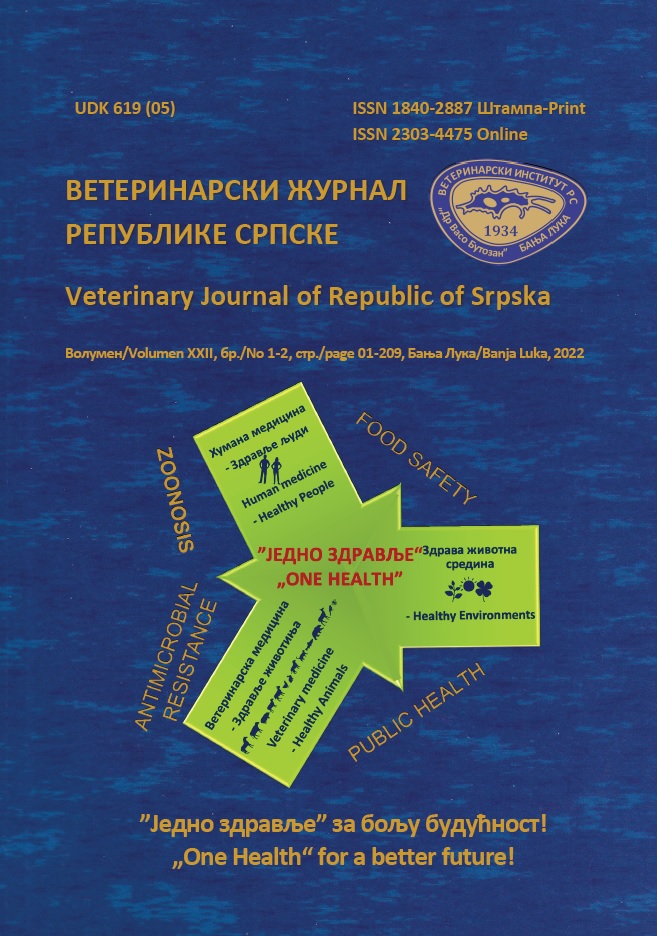ACTIVITY OF SELENENZYMES GPx-1 AND GPx-3 IN THE BLOOD OF WORKING HORSES IN THE TERRITORY OF CENTRAL SERBIA
DOI:
https://doi.org/10.7251/VETJEN2201186VAbstract
Glutathione peroxidase (GPx) is an enzyme that has 8 isoenzyme forms, of which GPx-1 is an obligatory intracellular enzyme, while GPx-3 is active in extracellular fluids, especially in blood plasma. The main role of GPx is the protection of cells from oxidative stress induced by free oxygen radicals. GPx activity is taken as a reliable indicator of selenium status in the human and animal organism. Selenium is introduced in organism mainly through the food chain. Ingested selenium is incorporated in the form of selenomethionine and selenocysteine into tissue proteins, i.e. enzymes. Detailed investigation related to the content of selenium in feed and domestic animals were carried out in Serbia, especially in economically significant species such as poultry, pigs, sheep and cattle. However, working cold-blooded horses, especially those that are fed exclusively with locally grown feed, or are on pasture, have not been examined in detail so far. Due to their specific way of breeding, they are ideal indicators of the selenium status of monogastric herbivores in a given locality.
The goal of our study was to determine the status of selenium based on the activity of GPx-1 and GPx-3 in blood samples of non-supplemented working horses in the territory of central Serbia.
In our study, a total of 12 samples of horse blood taken from the localities of the municipalities of Kraljevo, Zaječar, Valjevo and Dimitrovgrad were tested as follows: 12 samples of blood plasma and 12 samples of washed erythrocytes. Measurement of GPx-3 and GPx-1 activity was carried out using the Guncler method at a wavelength of 366 nm. For each animal, during sampling, data on gender, age, vaccination and deworming, composition and origin of the given nutrients were recorded. The average activity of GPx-1 was 502.02 ± 91.77 μKat/l, and GPx-3 3.46 ± 1.02 μKat/l, which indicates the existence of a marginal selenium deficit in the population of unsupplemented working horses in the territory of central Serbia.

